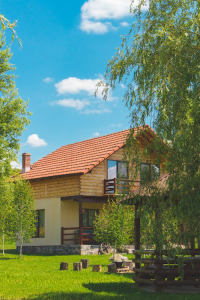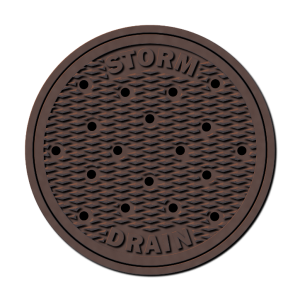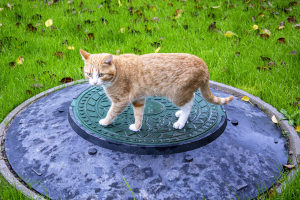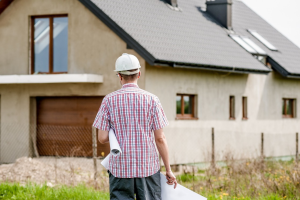
A malfunctioning landscape drainage system can quickly turn a picturesque property into a soggy, problematic landscape. Homeowners struggling with pooling water, erosion, or waterlogged gardens understand the frustrations and potential damages that poor drainage can bring.
In this comprehensive guide, our landscaping consultation experts discuss the critical role of effective landscape drainage in combating these challenges. We will unravel the complexities of different drainage types, from surface grading to rain gardens, explaining their significance in preventing water damage and fostering healthy soil and plant growth.
By exploring the importance of proper design, installation, and maintenance, homeowners will gain insights into creating a vibrant and well-drained landscape, keeping their yards both dry and visually appealing.
Understanding Landscape Drainage
Landscape drainage systems encompass various methods designed to manage the flow of water across outdoor spaces. The primary purpose of these systems is to efficiently redirect excess water away from specific areas, preventing water accumulation and subsequent issues such as erosion, water logging, and property damage.
Drainage plays a pivotal role in maintaining soil structure and preventing erosion by controlling the movement of water. When water is not properly managed, it can erode soil, wash away nutrients, and negatively impact the stability of the landscape. Effective drainage mitigates these concerns by channeling water away, preserving soil integrity, and safeguarding against erosion-induced damage.
Furthermore, proper drainage is necessary for fostering healthy plant growth. Excessive water accumulation around plant roots can lead to root rot, suffocation, and a lack of oxygen, impeding their growth. By ensuring adequate drainage, water is dispersed evenly, allowing plants to access essential nutrients while preventing water-related stress. This promotes robust root systems and healthier vegetation, enabling plants to thrive and contribute to a vibrant, flourishing landscape. Efficient landscape drainage is, therefore, fundamental in creating and maintaining a visually appealing and healthy outdoor environment.

Types of Landscape Drainage Systems
Effective landscape drainage systems come in various forms, each tailored to address specific water management needs within outdoor spaces. Understanding these different types is crucial in ensuring an optimal solution for water control and preservation of landscapes.
1. Surface Drainage
Surface drainage methods focus on managing water that flows across the ground surface:
- Grading and Contouring:This technique involves shaping the land’s surface to direct water away from structures or vulnerable areas. Proper grading ensures water flows in the desired direction, preventing pooling and water damage. Landscape design and installation professionals employ grading strategies to sculpt the land, enhancing both functionality and aesthetics.
- Swales and Berms:Swales are shallow depressions designed to channel and slow down water runoff, aiding in its absorption and filtration. Berms, on the other hand, are raised mounds of soil that redirect water flow. Both swales and berms are valuable landscape design elements that contribute to effective surface drainage.
2. Subsurface Drainage
Subsurface drainage systems manage water beneath the surface:
- French Drains:These consist of perforated pipes buried in trenches filled with gravel. French drains efficiently collect and redirect excess water away from specific areas, preventing water logging. Professional landscape design and installation services often incorporate French drains to manage groundwater effectively.
- Drain Tiles:Drain tiles are underground pipes installed to collect and transport water away from low-lying or problematic areas. They are instrumental in controlling water accumulation and preventing soil saturation.
3. Rain Gardens
Rain gardens are specifically designed landscape features intended to manage and utilize rainwater:
- Purpose and Design: Rain gardens are strategically placed depressions planted with native vegetation, designed to collect and absorb rainwater runoff. They act as natural filters, reducing pollutants and allowing water to seep slowly into the soil.
- Eco-Friendly Approach:Incorporating rain gardens into landscape design and installation plans promotes eco-friendly water management, enhancing biodiversity and contributing positively to the environment.
Landscape design and installation professionals integrate these diverse landscape drainage systems to create comprehensive solutions tailored to the unique needs of each outdoor space, ensuring effective water management and preserving the beauty of landscapes.

Importance of Proper Drainage
Effective landscape drainage is integral to preserving the health and aesthetics of outdoor spaces, preventing a multitude of problems associated with water accumulation.
Preventing Water Damage
Proper drainage systems serve as a shield against potential water-related damages:
- Structural Protection:Adequate drainage safeguards buildings, foundations, and other structures from water infiltration, which can cause structural weakening, mold growth, and decay.
- Landscape Preservation:Without proper drainage, excess water can lead to soil erosion, washing away vital nutrients and compromising the integrity of the landscape.
Soil Health and Nutrient Retention
Maintaining soil health is pivotal for the growth and sustenance of plants:
- Preventing Soil Compaction:Adequate drainage prevents soil compaction, ensuring that the soil retains its porosity, which is vital for root development and nutrient absorption.
- Root Growth and Oxygen:Properly drained soil allows roots to penetrate and grow, accessing essential oxygen. This promotes robust root systems crucial for healthy plant growth.
Mitigating Water-related Stress
Effective drainage reduces water-related stress on plants:
- Preventing Water logging:Proper drainage prevents water logging around plant roots, avoiding issues like root rot and suffocation and ensuring plants receive adequate oxygen and nutrients.
- Enhanced Plant Resilience:By managing water levels, plants become more resilient to adverse weather conditions, minimizing the risk of water-induced stress.
Investing in and maintaining a proper landscape drainage system is not just about preventing immediate water-related issues; it’s an investment in preserving the integrity, health, and longevity of both the landscape and the plants within it.

Landscape Associates of CA – Your Key to Sustainable Drainage Solutions
Transform your landscape with confidence! Landscape Associates of CA brings 30 years of expertise in San Jose, Santa Clara County, offering tailored drainage solutions, expert landscaping consultation, and water-efficient landscape designs. Elevate your outdoors with our customized services, ensuring a vibrant, sustainable landscape. Contact us today for professional Landscape design and installation that turns your vision into reality!
Besides landscaping consultation, we also help homeowners elevate their outdoors with outdoor kitchen and dining, outdoor lighting installation, retaining wall construction services, and more. Discover our range of outdoor landscape solutions.